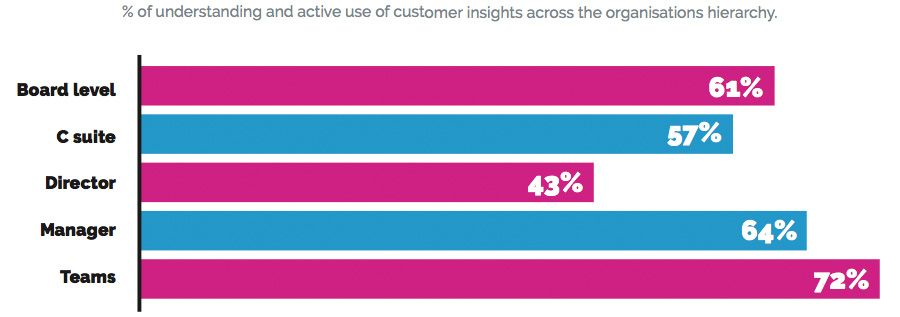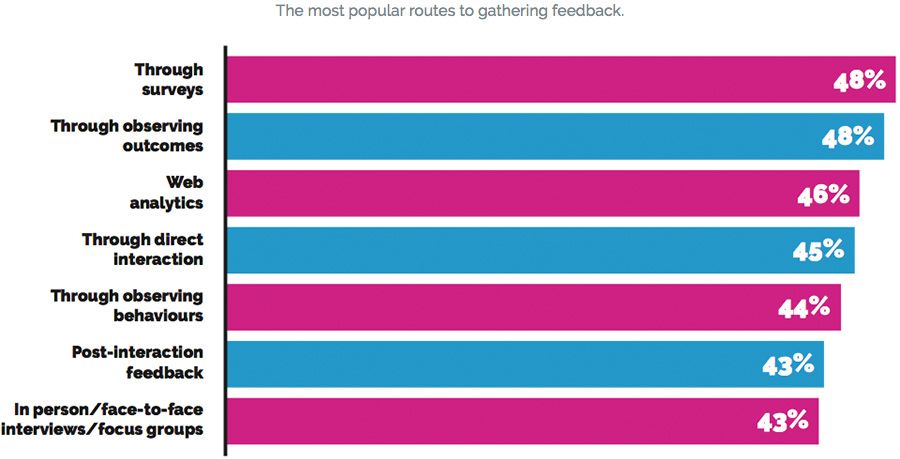Business leaders hold customer data in high regard, with eight-in-10 recognising its potential to drive financial benefits. However, putting this into practice is proving easier said than done, with half of business leaders saying customer insight is not prioritised during their decision making processes.
The benefits of data analysis for businesses have been widely documented in recent years.By studying the habits of consumers via the data of their purchases, firms can ensure marketing efficiency by targeting people with the products they actually need, while providing the goods and services customers need to ensure that they are acquired and retained – boosting sales and profit margins.
Just as regularly as the benefits of data insights are discussed, though, firms are also warned that they are not doing enough to realise them. For the longest time, business leaders have been singing from the same song-sheet, extolling the virtues of customer data collection and analysis, but perpetually struggling to walk the talk.

The latest such study comes from Clarasys, and has found that firms have not been using the data from the technology they have been heavily investing in, in order to shape their business decisions, which could be seen as money wasted. In the disruptive pre-pandemic market, this was bad enough, but in a world where there has been a deep shift in customer behaviours and expectations, such a failure is even more pertinent.
Businesses are still scrambling to respond to changing customer behaviour during the pandemic, and could have done so more effectively if they had capitalised upon valuable data, according to the study. Clarasys’ survey of 500 senior decision makers across marketing, operations, technology, and customer experience found that 84% of senior business leaders agreed using customer insight would drive financial benefits, and 86% said doing so could see them more effectively track financial returns on investments.
In spite of that, half of all businesses said they were struggling to gather meaningful insights, citing poor and unstructured data as a key challenge. Currently, the most common way businesses collect customer insight in a more coherent way is via surveys – however, even this option was favoured by fewer than half of respondents. Meanwhile, observing outcomes and web-analytics were the next most popular methods – but still neither was adopted by more than 48% of businesses.

More problematically, because of their lack of structured insight, 50% of senior leaders still highlighted that customer insight was not prioritised during decision making. According to Clarasys, the root cause of this may well be a lack of basic understanding of customer insight strategy. Even as 50% of the senior business leaders questioned reported they did not know how to turn data into useful customer insight to feed into the organisation strategy, a further 61% of organisations faced a lack of skills and capability to analyse customer data effectively to generate insight.
Clarasys found that 57% of respondents said their C-Suite lacked a good understanding of, or actively use, customer insight for decisions, and this was even worse at Board Level, at 61%. The inability to transform customer data into useful insight is evidently not a technology issue in this case. Indeed, 72% of organisations stated they have the systems they need to effectively analyse the customer data they have to drive insight. This suggests resolving the situation will instead require companies to focus on the engagement of your people first, and removing the silos that have been created when you look at your business through a customer-centric lens.
Simon Blosse, Principal Consultant at Clarasys, said, “What perhaps surprised us was the amount of technology and capability already in place across businesses. What was lacking was the trust in the data, predominantly due to the need for investment in skills, understanding, and knowledge to unlock the huge value sitting in almost all businesses. We would urge businesses to take a step back from the technology, reflect on the insight you have, and how actively it is being used and therefore how meaningful it is to your business today. Ask yourself, what needs to change to make your understanding of the data easier, and your use of it for decision making more likely.”
This article originally appeared in ConsultancyUK. Photo by OSPAN ALI on Unsplash.












